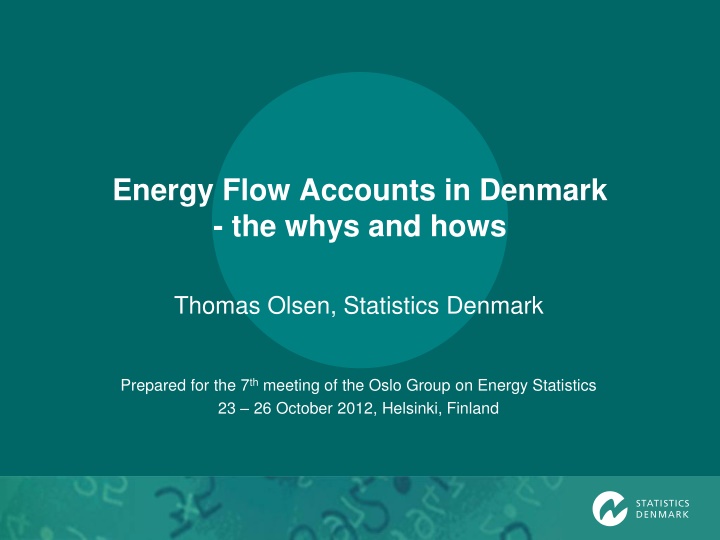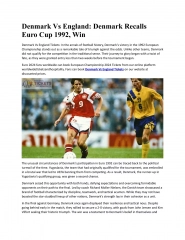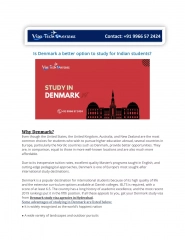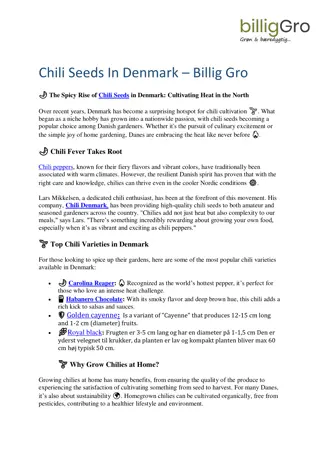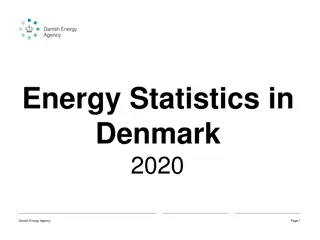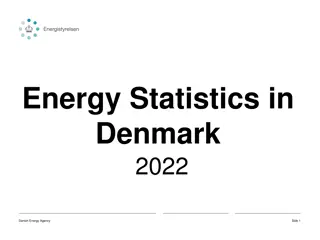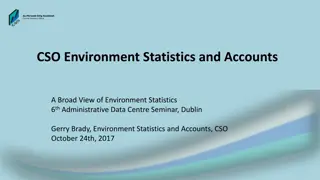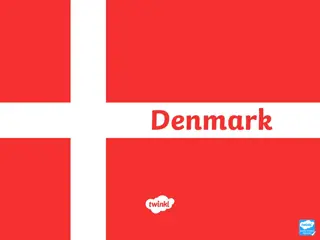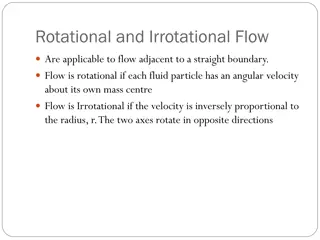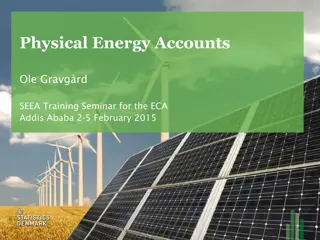Energy Flow Accounts in Denmark - the whys and hows
Energy Flow Accounts in Denmark explained in detail, covering the reasons behind wanting energy accounts, how they are compiled, quality control measures, applications, and cooperation with the Energy Agency. Understand the concept, significance, and application of Energy Flow Accounts in the national economy.
Download Presentation

Please find below an Image/Link to download the presentation.
The content on the website is provided AS IS for your information and personal use only. It may not be sold, licensed, or shared on other websites without obtaining consent from the author.If you encounter any issues during the download, it is possible that the publisher has removed the file from their server.
You are allowed to download the files provided on this website for personal or commercial use, subject to the condition that they are used lawfully. All files are the property of their respective owners.
The content on the website is provided AS IS for your information and personal use only. It may not be sold, licensed, or shared on other websites without obtaining consent from the author.
E N D
Presentation Transcript
Energy Flow Accounts in Denmark - the whys and hows Thomas Olsen, Statistics Denmark Prepared for the 7th meeting of the Oslo Group on Energy Statistics 23 26 October 2012, Helsinki, Finland
Outline What is Energy Flow Accounts? The whys reasons for wanting energy accounts The hows - compilation in practice Quality control Applications Cooperation with Energy Agency 2 2/17/2025
What is Energy Flow Accounts? Supply and use of energy organised within the System of National Accounts framework Based on the same concepts, definitions and classifications as National Accounts Described in SEEA Energy Supply and use of energy within the national economy (not the territory) Described by ISIC/NACE industries Transportation activities are also broken down by industries This way of describing the flow of energy is fully consistent with the way economic activities are described 3 2/17/2025
Residence principle vs. territory principle Residents Non-residents Territory Energy balance Energy accounts Abroad 4 2/17/2025
The whys Statistics Denmark has a long tradition for publishing energy statistics e.g. Energy supply of Denmark 1900 1958 The Statistical Department, Copenhagen (1959) Long tradition for compiling supply and use tables and IO-tables as part of the work with national accounts First oil crisis focus on energy and security of supply Data needed for analysis of effects on the economy Energy Agency founded in 1976 5 2/17/2025
The whys, cont. Improvement of the national accounts Wanted to have a close link with physical flows Improve fixed price calculations Link to economy, input-output tables enables analysis of the link between economy and use of energy at the macro as well as the industry level Allows for a series of quality checks that cannot be carried out if only either physical or monetary data are available 6 2/17/2025
The Danish Energy Flow Accounts Supply and use of 40 types of energy broken down by 117 industries The same types of energy as in the energy balance Time series 1966 2010 Physical as well as monetary energy flow accounts Monetary accounts part of the supply use tables of the National Accounts Approx. 40 commodities out of a total of 2350 commodities 7 2/17/2025
The hows - compilation in practice Compilation strategy Product by product First, supply and use in physical (specific) units and monetary values (basic prices) simultaneously Secondly, uses in other price levels Finally, common units and calculation of net use of energy Energy, CO2, SO2 taxes Specific units Basic prices Trade margins VAT Market prices Net use of energy Common units 8 2/17/2025
Compilation strategy and data sources Step 1: What is available for economic activities? Production + Imports Exports Changes in inventories Step 2: What is used according to the data sources? Data sources, e.g. Basic energy statistics energy balance Census on the industrial companies use of energy Administrative data. Reimbursement of energy taxes Residual is broken down by data on employment Step 3: Supply and use is balanced Step 4: Rearrangement into a supply and use table Please see spreadsheet for an example 9 2/17/2025
Trade margins Based on a percentage of the basic price Wholesale trade margins Retail trade margins Trade margins include transportation costs 10 2/17/2025
Environmental taxes Energy taxes, CO2-tax, SO2-tax Quantity * specific energy product tax rate Balanced to the actual revenue recorded in the public finances account 11 2/17/2025
Value added tax (VAT) (Basic price + wholesale margins + retail trade margins + energy taxes + CO2-taxes + SO2-taxes) * specific yearly VAT - rate The standard VAT-rate is adjusted in order to take into account the VAT-legislation Basic prices + Trade margins + Taxes + VAT = Market prices 12 2/17/2025
Quality control Development in the time series Development in the industry specific intensities Use of energy compared to output at fixed prices Internal checks: Conversion losses Input-output ratio in refineries Contribution to Gross Value Added Market unit prices in relation to observed prices Value of energy input compared to total input 13 2/17/2025
The Danish Energy Flow Accounts 14 2/17/2025
Possible applications when organised in an integration framework like SEEA/SNA Hybrid accounts Links between energy, economy, employment etc. and other environmental domains Energy intensities / energy productivity Analysis of the relationship with the economy Input-Output table based analysis Input in extended macroeconomic models 15 2/17/2025
Hybrid Accounts: Link to the Economy Gross use of energy, CO2 emissions, CO2 permits and the link to the economy. Denmark, 2007. Industries Gross use of energy CO2 S urren- dered permits CO2 permits allocated Energy related taxes Energy related subsidies Gross value added Employ- ment emissions TJ 1 000 tonnes CO2 / allowances Mill. Dkk Persons Total Households Total industries 1 Agriculture, fishing and quarrying 2 Manufacturing 3 Electricity, gas and water supply 4 Construction 5 Wholesale and retail trade; hotels, rest. 6 Transport, storage and communication 7 Financial intermediation, business active. 8 Public and personal services 2 015 575 265 835 1 749 739 81 790 476 806 362 684 20 946 45 428 700 879 18 623 42 582 117 428 13 797 101 522 4 836 8 574 29 549 1 539 1 401 53 877 498 1 247 29 407 27 915 36 409 21 179 15 230 984 2 260 108 1 314 2 256 3 328 1 454 3 526 202 1 218 064 2 897 520 85 117 1 218 064 2 897 520 11 51 895 46 186 376 3 16 410 2 72 701 21 170 092 9 109 403 8 303 273 17 307 914 1 002 666 0 0 29 407 2 187 5 662 21 559 27 915 2 292 5 601 20 022 85 714 396 153 12 430 192 422 564 496 186 800 456 839 0 0 0 0 0 0 0 0 0 0 16 2/17/2025
Energy Intensities by industries 10 TJ / Mill Dkk output, at 2000-prices 9 8 7 6 5 4 3 2 1 0 1 agriculture, fishing and quarrying 2 manufacturing 3 electricity, gas 4 construction 5 ws. and retail trade; hotels, restaurants 6 transport, post and telecomm. 7 finance and business activities 8 public and personal services and water supply 17 2/17/2025
Other applications: Modelling and compilation of air emissions accounts Input-output analysis Indirect flows What are the drivers? Which types of final demand? Consumption perspective rather than production perspective Energy embodied in imports The energy accounts are used as input in macro- economic models Ministry of Climate, Energy and Building Danish Economic Councils Ministry of Finance Business associations, banks, consultants etc. Input in the compilation of air emissions accounts 18 2/17/2025
IO modelling results Use of energy by causing final demand Can be broken down by industries Direct and indirect. In Denmark and globally Government consumption 6 pct. Investments etc. 6 pct. Private consumption can be broken down by consumption categories e.g. type of food or services P rivate consumption 38 pct. E xports 50 pct. 19 2/17/2025
Close cooperation with Energy Agency September Energy Agency Statistics Denmark November 20 2/17/2025
Contact information Thomas Olsen Senior Adviser Statistics Denmark National Accounts Division Tol@dst.dk 21 2/17/2025
